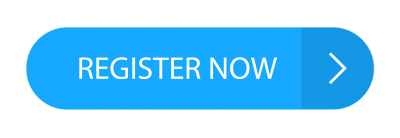Individualized Learning Programs: Effective Strategies For Developing Interests and Talents in ADHD Children
Abstract
ABSTRAK
Attention Deficit Hyperactivity Disorder (ADHD) is one of the most common developmental disorders in children. Children with ADHD usually have three main types of problems: difficulty concentrating, hyperactivity and impulsivity. The cause of ADHD in children is currently unknown. Some factors that are thought to cause ADHD are genetic factors, risk factors, environmental factors, brain damage, food additives, and sugar. Children with ADHD experience developmental disorders that cause increased motor activity and eventually lead to behaviors that appear abnormal and excessive. While there is no total cure for children with ADHD, the symptoms can be well managed through medication and therapy. Such as drug therapy, nutritional therapy, play therapy, and biomedical therapy. More boys are diagnosed with ADHD than girls. Haryanto (2019), identifying children with ADHD can be done by classroom teachers, parents or related professionals. The identification of ADHD children aims to obtain information as early as possible whether the child has a disorder or not. To meet the criteria for ADHD diagnosis, a child must be at least six months old. The Individualized Learning Program is designed to make it easier for teachers to know the individual talents, interests and needs of each child. The Individualized Learning Program is based on the child's needs, barriers, styles and abilities.
Keywords: ADHD; Individual Learning Program; Strategy;
Keywords
Full Text:
PDFReferences
REFERENCES
Irfan, NIM (2023). OPTIMIZATION STRATEGY OF INDIVIDUAL LEARNING PROGRAM (PPI) TO SUPPORT PSYCHOLOGICAL DEVELOPMENT OF CHILDREN WITH ATTENTION DEFICIT/ HIPERACTIVITY DISORDER (ADHD) AT BUDI MULIA DUA PANDEANSARI SCHOOL (Doctoral Dissertation, UIN SUNAN KALIJAGA YOGYAKARTA).
Rahmawati, AD, Lisnawati, D., & Windari, AR (2024). Teacher Strategies in Handling Children with ADHD (Attention Deficit Hyperactivity Disorder) in Learning in Class 2 of Kalicacing 02 State Elementary School, Salatiga.Journal of Elementary School Teacher Education,1(3), 7-7.
Adi, PN Efforts to Minimize Hyperactive Behavior in ADHD Children through a Holistic Treatment Approach (Integrated & Comprehensive Treatment).
Mirnawati, Amka 2019, EDUCATION OF ADHD CHILDREN, Yogyakarta: CV BUDI UTAMA
Lalusu, R. (2004). The relationship between attention deficit hyperactivity disorder and learning achievement in grade 1 elementary school children in Wenang sub-district, Manado city e-CliniC, 2 (1).
Nisa, FA, & Khotimah, N. (2019). Teacher methods for improving the concentration of children who experience attention deficit hyperactivity disorder (Gpph/adhd) in learning activities. Academia: Journal of Multidisciplinary Studies, 3(2). 235-248.
Nurfadhillah, S., Nurfaizah, S., Nurlayi, H., & Andini, P. (2022) The Role of Teachers and Parents in Children Diagnosed with ADHD in Negri Gondrong Elementary School 4. ALSYS, 2(6), 689-701.
Gunawan, L. (2021). Interpersonal Communication in Children with Attention Deficit Hyperactivity Disorder (ADHD). Psycho Education, 19(1), 49-68.
Rosyad, A. (2022). LEARNING MODELS AND STRATEGIES FOR CHILDREN with ADHD, (Attention Deficit Hyperactivity Disorder). Journal of Innovation Research and Knowledge, 2 (3), 591-600.
Herdayanti, HF (2021). LEARNING STRATEGIES FOR CHILDREN WITH ADHD IN MI, EAST BANJARMASIN DISTRICT. 2021,
Amalia, R. (2018). Intervention for Early Childhood Children Who Experience ADHD Disorders Through a Cognitive Behavioral Approach and Alderian Play Therapy.Obsession Journal; Journal of Early Childhood Education,2(1), 27-33








.png)